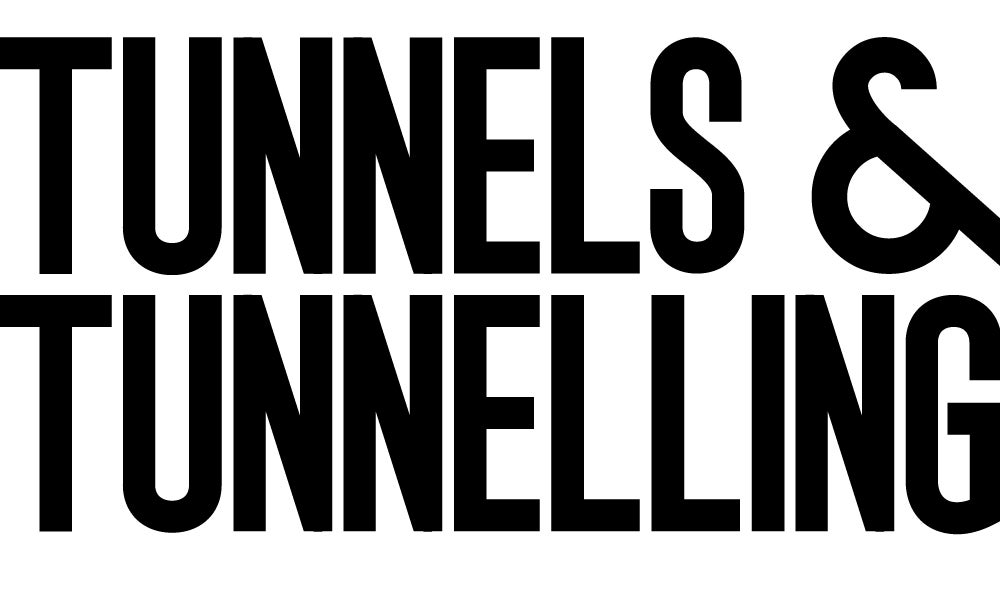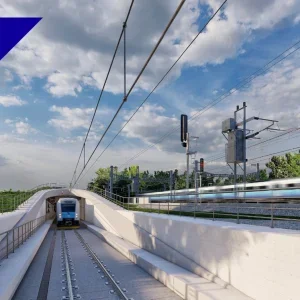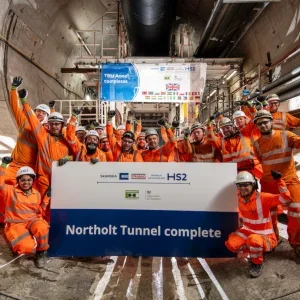Two workers were injured late May during concreting works on the Hanekleiv tunnel in Norway, which is being strengthened along with six neighbouring twin tubes on the E18, near Oslo, after a roof fall in December last year.
Contractor Veidekke told T&TI the accident, which happened during remedial structural works, occurred near the north portal of the northbound tube of the Hanekleiv twin bore tunnel.
The workers suffered slight injuries when the frost/waterproof shell lining in the tunnel, being used as shuttering, collapsed under the weight of a fresh lift of concrete.
The shell lining had been held by the original positioning bolts and the contractor was placing the concrete behind in 1m lifts to minimise lateral pressure. Veidekke had already concreted behind 52 sections of shell lining before the accident, caused by positioning bolts pulling out of the rock, T&TI was told. The lining collapsed on opposite sides of the tunnel, injuring the two workers, one of whom managed to shelter by a concreting truck.
All work was stopped to investigate the cause of the accident, the site of which has been examined by investigators and police. The client, the Norwegian Public Roads Authority (NPRA), reviewed all of the contractor’s procedures for different types of tunnel strengthening works on its two remedial contracts – including the heaviest, full vault concreting. Work was then allowed to restart everywhere except at locations employing the relatively lighter type of strengthening work used where the accident happened.
NPRA was examining Veidekke’s proposal to boost the system using extra bolts, as T&TI went to press.
The need for extensive remedial strengthening works at the Hanekleiv emerged from checks of structural capacity versus local geology after the roof fall in the southbound tube.
An initial report into the incident, produced by an independent expert group for the Department of Transport (SD), blamed the weakening effect of swelling clay (smectite) but highlighted a mismatch of structural lining against geological features, which led to a wider investigation of the tunnel and adjacent bores being launched (T&TI, March, p6, 14-16). NPRA has had its own investigation underway, which is to report soon.
After detailed examinations of the lining and geology at Hanekleiv and its neighbours, NPRA ordered a range of remedial works also to be undertaken on six other tunnels on the E18, all of them twin bores. The other tunnels are: Loken; Bolstad; Hillestad; Bringaker; Botne; and, Brekke. Most of the strengthening works are needed in two of the twin tubes – Hanekleiv and Loken, which are being handled together in one contract worth US$10.7M.
Contractor Mesta did immediate repair work in the tunnel but the two main contracts for the remedial works, worth a total of US$32.9M, were won by Veidekke following an initial contract for US$1.6M. The government has approved a total of US$56.7M in extra funds for the tunnel strengthening works and associates costs, with three quarters of the sum earmarked for the structural improvements plus planning and management.
As vacation season approaches, and E18 is one of the country’s busiest roads, the deadline for the first completion of the works is 6 July which should see the tunnels open in one direction, northbound, for contra-flow traffic. The southbound tunnels are due to be opened on 1 October.
Both Veidekke and NPRA note that the type of lighter strengthening works involved in the accident is not on the critical path of the construction programme. Veidekke added that while the contract includes an early completion bonus of US$49,340 per day, the daily penalty rate for delay finishing is half that much.
Debris that was removed from the earlier roof fall in the Hanekleiv tunnel, in Norway Hanekleiv debris Workers suffered minor injuries when shuttering collapsed at the Hanekleiv tunnel, in Norway Shuttering collapse at Hanekleiv







